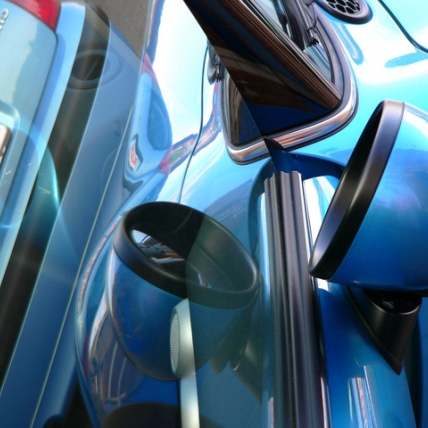What’s New in Car Safety Technology

If you're a safety-minded driver and it's been a while since you've looked at new cars, you're going to be pleasantly surprised. When it comes to automotive safety and technology, it's not your father's Oldsmobile. The Industry, responding to consumer and regulatory pressure, has come up with loads of innovative safety features well beyond the dual airbag and the anti-lock brakes of a generation ago.
Here is an overview of some of the latest auto safety innovations now coming as standard features on newer cars.
- Back-up/Rear View Video Systems. Many cars now come with an LCD monitor in the dashboard of your car hooked up to a small camera in the rear. When you put your car in reverse, your stereo display will switch to the camera feed, and you can see behind you, below the blind spot that exists below your rear window. If there are pets, toys, toddlers, pedestrians or other obstacles behind you when you back up, your first warning won't be a dreadful bump.
- Tire Pressure Monitoring System. According to the National Highway Traffic Safety Administration, improper tire pressure is responsible for some 660 traffic fatalities and 33,000 injuries every year. Furthermore, the same agency estimates that one out of every three cars on the road has a significantly under-inflated tire. A tire pressure monitoring system is a series of gauges that tells you what the tire pressure is in each tire - right on a dashboard display. If you know the manufacturer's specification (you can find stamped on the side of the tire, and often in the glove compartment or on a plate in the driver's side door jam), you can correct the problem before the tire blows.
- Drowsiness Alert Systems. These systems use cameras to detect drooping head motions, eye movements or signs of weaving or erratic driving to detect drowsiness on the part of the driver. The system will cause a beep or a vibration in the steering wheel to wake you up and let you know it's time to pull over.
- Blind Spot Monitors. Most cars have a gap in their rear view mirror visibility. For example, cars at the 4 o'clock and 7 o'clock positions, moving at the same speed as you, may be too far forward to be seen in your side mirrors, and not easy to see even if you can turn your head. Cars equipped with blind spot monitors will alert you to cars that may be in your blind spot if you turn on your blinkers. The system could consist of an audio signal, or a visible alert in your windshield or mirrors themselves.
- Forward Collision Warning/ Automatic Emergency Braking. These systems monitor the area to the front of your car and alert you to collision hazards. Depending on the system, the alert could be a beep, a vibration or on some systems an automatic braking mechanism.
- Lane Departure Warning Systems. This feature relies on sensors that can 'read' the lane markings on the road in front of you. If you begin to drift across the lane marking and you're not using your turn signal, your car will alert you with a beep or a vibration in the steering wheel or seat.
- Curve Speed Warning. This system uses GPS technology to let you know if you're driving at a speed that's unsafe for an approaching curve.
- Electronic stability control. These systems use state-of-the-art computer engineering and microprocessors and sensors to apply detect and correct for oversteering and understeering in response to road hazards. These systems reduce engine speeds automatically and apply brakes to individual wheels as necessary, helping to prevent spinouts, flipping and other loss of control incidents.
If you just bought a new car, give your advisor a call to make sure your policy is up to date.

by
Melanie
Client Support

